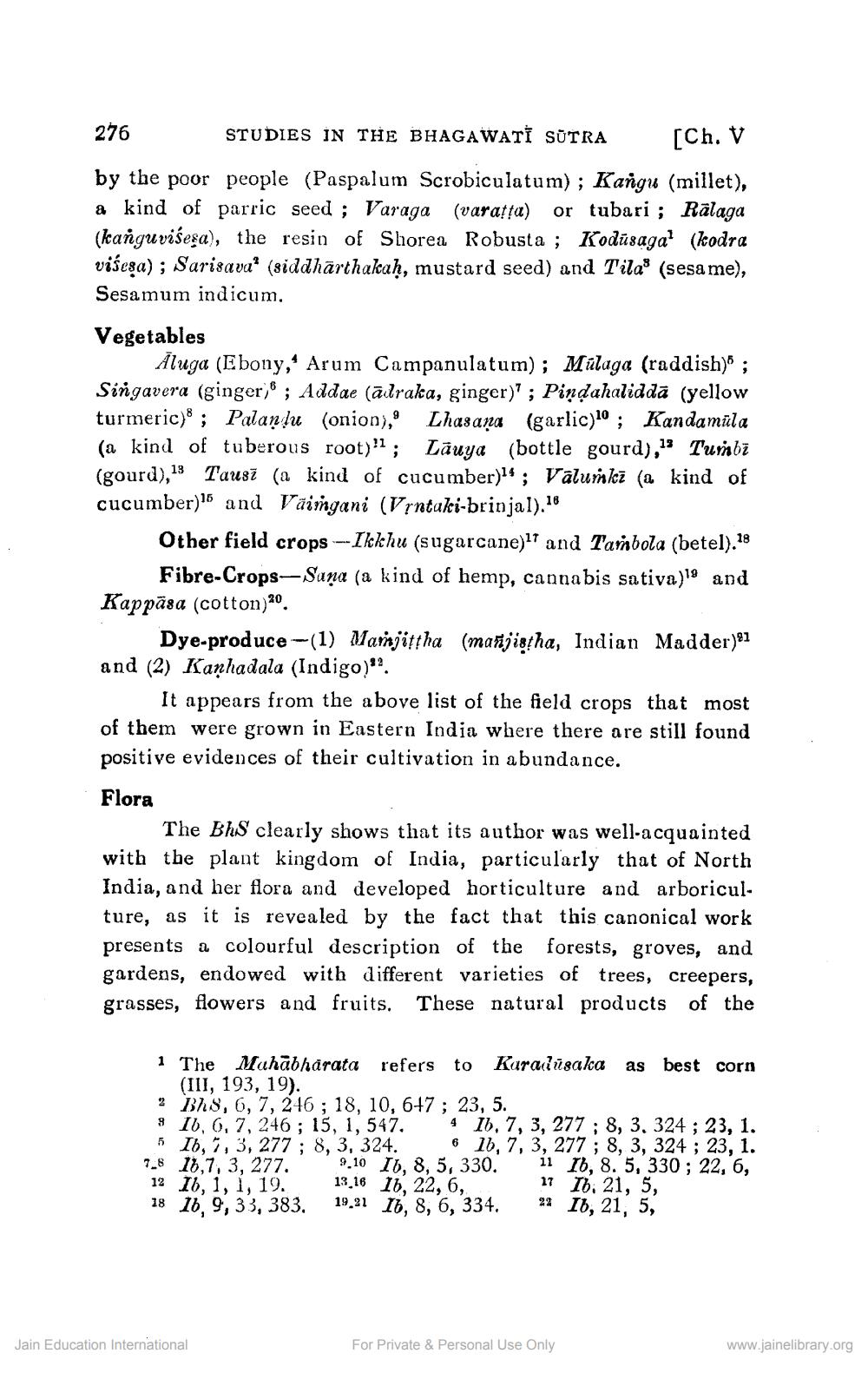________________
276 studies in THE BHAGAWATI SŪTRA [Ch. V by the poor people (Paspalum Scrobiculatum); Kangu (millet), a kind of parric seed ; Varaga (varatta) or tubari ; Rālaga (kanguvisesa), the resin of Shorea Robusta; Kodūsaga' (kodra višeşa); Sarisava’ (siddhārthakaḥ, mustard seed) and Tilas (sesa me), Sesamum indicum.
Vegetables
Aluga (Ebony, Arum Campanulatum); Mülaga (raddish) ; Singavera (ginger;^ ; Addae (āraka, ginger)?; Pindahalidda (yellow turmeric) ; Palandu (onion), Lhasana (garlic); Kandamüla (a kind of tuberous root)"; Lāuya (bottle gourd),13 Turbi (gourd),18 Tausī (a kind of cucumber)"$ ; Valurki (a kind of cucumber)15 and Vāingani (Vrntaki-brinjal).18
Other field crops - Ikkhu (sugarcane)?? and Tambola (betel).18
Fibre-Crops-Sana (a kind of hemp, cannabis sativa)19 and Kappāsa (cotton) 20.
Dye-produce -(1) Mamjittha (mafjistha, Indian Madder)81 and (2) Kanhadala (Indigo)".
It appears from the above list of the field crops that most of them were grown in Eastern India where there are still found positive evidences of their cultivation in abundance. Flora
The Bhs clearly shows that its author was well-acquainted with the plant kingdom of India, particularly that of North India, and her flora and developed horticulture and arboricul. ture, as it is revealed by the fact that this canonical work presents a colourful description of the forests, groves, and gardens, endowed with different varieties of trees, Creepers, grasses, flowers and fruits. These natural products of the
1 The Mahābhärata refers to Karalüsaka as best corn
(III, 193, 19). 2 Bh8, 6, 7, 246; 18, 10, 6+7 ; 23, 5.
Ib, 6, 7, 246; 15, 1, 547. $ 16, 7, 3, 277 ; 8, 3, 324 ; 23, 1.
Ib, 7, 3, 277 ; 8, 3, 324. 6 lb, 7, 3, 277 ; 8, 3, 324 ; 23, 1. 7-8 16,7, 3, 277. 9.10 16, 8, 5, 330. 11 Ib, 8. 5, 330; 22, 6, 12 16.1, 1, 19. 13.16 11. 22, 6, 17 16, 21, 5, 18 16, 9, 33, 383. 19.21 16, 8, 6, 334. 22 16, 21, 5,
Jain Education International
For Private & Personal Use Only
www.jainelibrary.org




